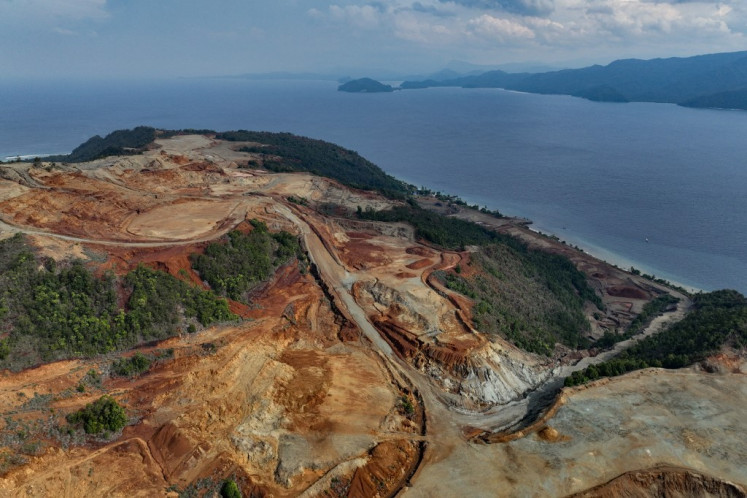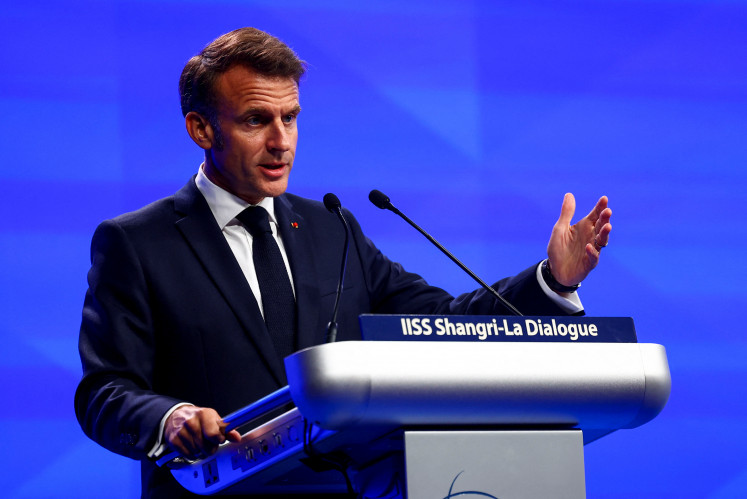Hotel industry predicted to stagnate by year-end
Indonesia’s hotel industry is heading for stagnation with less than 5 percent growth this year as a result of a decrease in hotel use rates by government institutions and weak consumer demand, the Indonesian Hotel and Restaurant Association (PHRI) has said
Change text size
Gift Premium Articles
to Anyone

I
ndonesia’s hotel industry is heading for stagnation with less than 5 percent growth this year as a result of a decrease in hotel use rates by government institutions and weak consumer demand, the Indonesian Hotel and Restaurant Association (PHRI) has said.
The association claimed the government’s decision to cut state spending by Rp 137 trillion (US$10.3 billion) last year led to fewer business meetings and working trips, which contributed to the decline in the hotel occupancy rate.
“The conditions were tough, especially in regions where growth was generated from the government sector,” PHRI head Hariyadi Sukamdani said earlier this week.
In Central Kalimantan, for example, the contribution from the government sector to the hotel occupancy rate was 70 percent, whereas in Jakarta, the corporate market dominated demands in the hotel sector.
Hariyadi said the nationwide hotel occupancy rate stood at 50 to 55 percent today, both for star-rated and budget hotels, from an average of 61 percent in 2016.
“The fall in the occupancy rates was also caused by oversupply. The number of guest rooms rose, but demand stayed weak,” he said.
Research issued by property consultant Colliers International indicate the market in Jakarta this year will be dominated by 4-star hotels, followed by 5-star hotels and 3-star hotels.
In the first three months of this year, two new hotels opened in Jakarta, namely Harris Vertu, located in Central Jakarta, which provides 240 new rooms to the existing market, and Yello Hotel Manggarai in South Jakarta with 102 rooms.
Thus, as of the first quarter, star-rated hotels cumulatively provided 39,310 guest rooms.
Colliers projects there will be a total of 4,356 additional rooms by year-end in Jakarta, bringing the total number of hotel rooms to 43,666, an increase of 12 percent year-on-year.
In terms of budget hotels, 50 hotels in Jakarta provided 5,907 rooms. In the first quarter, Amaris opened a new hotel in Mampang, South Jakarta.
“The slow growth of budget hotel development was very much affected by the low performance of the overall hotel market in Jakarta. This challenging market has led to a price war among hotels as a means to survive,” Colliers International senior associate director Ferry Salanto said in a research note dated April.
The average rental rate per day dropped as well to $79.45 in the first quarter from $81.19, primarily caused by occupancy rates that dropped to 50.7 percent from 57.9 percent.
Meanwhile, Bali’s hotel sector is still showing signs of improvement despite sluggish growth in the beginning of the year.
The number of guests coming to the island has risen, fueled by meetings, incentives, conferences and exhibitions (MICE), particularly in the Nusa Dua area.
Six new hotels began operations in the first quarter of 2017, namely 4-star hotels Radisson BLU Bali Uluwatu, Alaya Jembawan, Paramapada Hotel Jimbaran and Aston Canggu Beach Resort, and 5-star hotels Movenpick Resort & Spa Jimbaran Bay and Hoshinoya Bali.
“Over the past four years, the number of Chinese tourists has grown. As of January 2017, Chinese tourists dominated the Bali tourism market,” the research stated.
“The number of visitors from China usually increases in February, particularly during Chinese New Year and from July to August during the summer holiday.”
Observing the slow growth in the country’s hotel industry, PHRI said it would collaborate with the government to reach the target of 20 million foreign tourist arrivals in 2019.
“We have made a proposal to the government to change the branding of ‘Wonderful Indonesia’ to ‘Visit Wonderful Indonesia.’ So next year, the program will be more on selling products, not merely offering a brand,” Hariyadi said.









